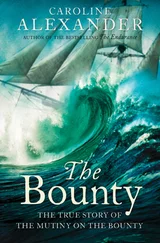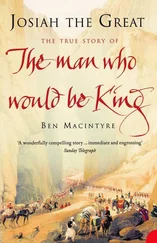Whenever Amedeo was presented to the king and Queen Elena they would welcome him warmly, and ask after his family, for the Guillets could always be depended on. With such old Savoyards, the royal family were certain of a devotion that was never guaranteed in wider Italian society. The kings of Italy tried, but never quite succeeded, in gathering up all the strands that had brought the nation together in 1860. By placing themselves at the head of the Risorgimento, the House of Savoy took uninvited charge of a national movement that was both liberal and republican in origin. A minority in parliament, which included ministers, never accepted the monarchy, and even the Fascist Party had a strong, albeit silenced, republican wing. The dynasty – which ruled by grace of God and the ‘will of the nation’ – had also made enemies among conservatives, especially the Catholic Church, whose territories, and Rome itself, the new kingdom had absorbed. The Lateran Treaty of 1929 had reconciled the Vatican to the Italian state, but no king of Italy ever received the papal blessing of a coronation in church. Nonetheless, the majority of Italians, especially the army, were loyal to a institution that, however imperfectly, had united the country. And none more so than those families from the dynastic heartlands of Piedmont and Savoy.
As a sportsman, Amedeo was not a household name, but nor was his fame confined solely to the army. Newspapers carried his photograph and reported his triumphs at showjumping and eventing competitions in Turin and Rome, Udine and Naples – a city he visited so often that the Gandolfos gave him a room of his own in their apartment. Before the Olympics, his principal ambition had been to enter his big Irish grey, Riario, in the English Grand National but events had always intervened. Instead, he contented himself by twice coming second and once third in the Grande Steeplechase di Roma, the most important in the Italian season, watched by the royal family from their pagoda-like box beside the course at Tor di Quinto. He also came second in 1934 in the Coppa del Duce, which was becoming almost equally prestigious, receiving a hearty handshake for his efforts from Mussolini.
But these achievements did not match being selected for the Olympic team. The regime, fully aware of the popular appeal of sport and its importance in terms of international prestige, expected much of the four riders. Although training was left to the army, Achille Starace, Secretary General of the National Fascist Party, was kept closely informed of their progress. Afanatic to physical fitness as well as for elaborate uniforms, he was a stickler for correct Fascistic speech and ‘Roman’ salutes and, as a result, the butt of endless jokes. But he ran the Italian Equestrian Federation well, and was himself a competent, albeit flashy rider. On his visits to the team, he would park his Alfa Romeo sportscar in the middle of the sand school and then jump over it on his horse.
Italy was not a country associated with an outstanding equestrian tradition, yet in the early years of the twentieth century it transformed the whole approach to riding. At the cavalry school at Pinerolo, outside Turin, Federico Caprilli evolved his theories of the ‘forward seat’, training riders to move with the horse, especially over cross-country and jumps. When the Italian cavalry, on modest mounts bought during the annual trawls through Ireland, began setting showjumping records of more than two metres high, the rest of the world took notice. By 1930, when Amedeo spent a year at Pinerolo, the school offered the best training in horsemanship available anywhere at that time. Mixed among the Italian officers in olive-grey were the uniforms of several other European countries, as well as the United States, Mexico and even Japan.
Colonel Francesco Amalfi, the Olympic team’s trainer, whittled down a shortlist of riders from the cavalry, the Black Shirts and the horse artillery from ten, to eight, until finally settling on four, among whom was Amedeo. The colonel had been one of Caprilli’s star pupils, and on the walls of the vast art nouveau manège at Pinerolo, named after the maestro and of the dimensions of a railway terminus, were the records that Amalfi himself had set as a showjumper before the First World War. From the moment of his selection, Amedeo’s regimental duties with the Cavalleggeri di Monferrato, whose commanding officer was his Uncle Ernesto, were reduced to a minimum.
Instead, his life became a hectic round of competitions up and down the country, as he trained two horses to the standards in showjumping, dressage and cross-country that he was likely to encounter in Berlin. The shelves in his bedroom were weighed down with little silver cups and, as his fame spread, a fashionable claque turned out to watch him, headed by Carlo Colonna of the grand Roman family, whom he had befriended at military academy. Amedeo would cross the winning post cheered on by society women, such as Giuliana Rota, later to marry one of the sons of Marshal Pietro Badoglio, and Clorinda, daughter of Admiral Thaon di Revel, the navy chief, who enjoyed the title of Duca del Mare, the ‘Duke of the Sea’. For a while his photograph advanced from the sports pages to the gossip columns as he was linked as a flirt , of Elsa Merlini, one of Italy’s earliest talkie film stars. There was even more excitement at the course at Tor di Quinto when the Hollywood stars Douglas Fairbanks and Mary Pickford, on holiday in Rome, turned out to watch, the latter chatting to Amedeo in passable French. The swashbuckling actor took photographs of him in his splendid uniform and sky-blue cloak, perhaps wondering whether Amedeo’s make-believe world were not even more fantastic than his own.
In spring 1935 Colonel Amalfi sent Amedeo away for three months to the cavalry school at Orkenyi, outside Budapest, where he could perfect his dressage, and pass on what he learned to the rest of the team. The other riders would arrive later so that they could compete with the Hungarian and German teams in a pre-Olympic session. The interval in Budapest was the most idyllic period of Amedeo’s career as a showjumping soldier. After long days spent working the horses, he and the Hungarian officers would pile into cars and head towards Budapest. They were amateurs in the true sense of the word, competing for the love of their sport. By contrast, the German team seemed to be joyless representatives of modern athleticism shepherded by a dour general, who would announce in the mess – as though, Amedeo felt, he were declaring the invasion of France – that at half past nine his riders had to retire to bed.
By the time Colonel Amalfi and the others arrived, Amedeo had another interest in his life apart from his horses. He had fallen in love, or believed that he might have done so. Maria was one of beautiful identical twins, the daughters of a minister in the regime of Admiral Horthy, the conservative dictator of Hungary.
‘How on earth can you tell them apart?’ Amalfi asked, the first time he saw them dancing together.
‘With the heart, colonnello . With the heart,’ Amedeo replied.
Brought up in a society of often stultifying conformity, he found Maria to be uninhibited and modern in a manner he had seldom encountered before. Those women he knew in Italy were either sheltered debutantes he met in society, the sisters of friends and relatives or the demi-mondaine girls found in bordellos in every town of significance to whom Italian males owed their sexual initiation. But Maria occupied a different level. They would converse in French, and Amedeo was smitten by the novelty of a woman who asserted her own point of view and did not hesitate to contradict opinions he offered of the world if she happened to disagree. She kept her thick black hair in a bob, wore a bright red slash of lipstick which stained the cigarettes she smoked with soigné elegance, and had high cheekbones and beautiful dark eyes which, to Amedeo, hinted at exotic Magyar ancestors from the steppes. Her parents allowed the two to spend long periods alone together, which would have been quite unthinkable in Italy. One afternoon, they went bathing in the Danube and Maria, in a one-piece black-and-white costume, swam through the icy water to St Margit’s Island, in the centre of the river. Amedeo struggled after her, but by the time he finally arrived and pulled himself, exhausted, onto the shore, he looked round to find that she was already swimming back again.
Читать дальше












